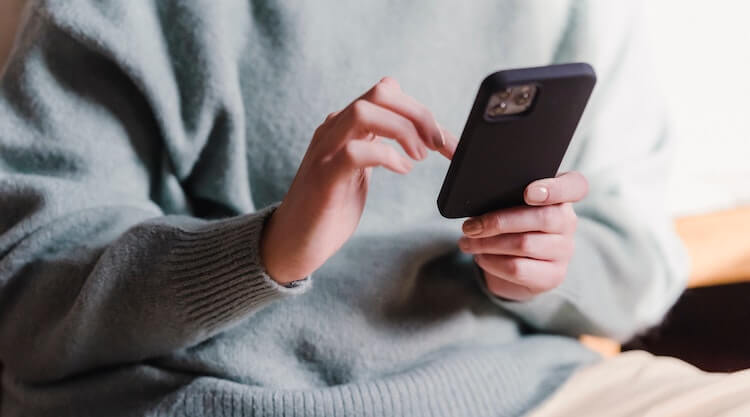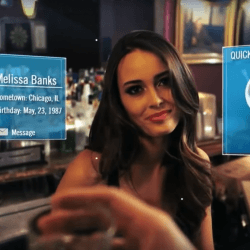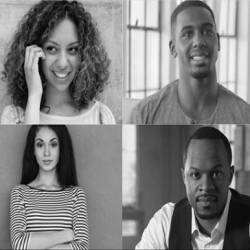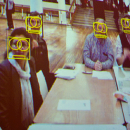How Dating Apps Can Do Better For Non-Binary Users
More inclusive filtering systems and search categories could make all the difference.

Online dating has become increasingly popular, especially as in-person interaction has been limited by the pandemic.
Even before the pandemic, dating apps were popular within the LGBTQ+ community, with twice as many lesbian, gay and bisexual adults saying they used these apps compared to straight counterparts. For many queer people, it’s harder to meet other queer people in real life, and dating apps provide an easier way to connect.
Although there’s not much data on it yet, dating apps are also popular with transgender and non-binary folks with an estimated 3 million transgender users on Tinder, the world’s most downloaded dating app. Unfortunately, most popular dating apps are designed for cis users, and as a result, it’s hard for people outside the gender binary to feel comfortable using them.
“Generally it’s not pleasant or even effective to use dating apps aimed at cis people,” says Alex, a non-binary individual who uses dating apps. “It’s really frustrating and very dysphoria-inducing.”
Better filtering systems and search categories that actually represent genders other than male and female could really help non-binary folks avoid harassment, reduce dysphoria, and connect with people who can understand and respect their identity.
Many mainstream apps force non-binary users to choose a binary gender
One of the most frequently criticized features of existing dating apps is thatthe one that forces users are forced to choose whether to show up in searches for men or women, even if they don’t fall within that gender binary.
“Bumble is weird because it allows me to list myself as non-binary, but it only lets you choose a preference for men or women,” says Grace Burnham, a non-binary Bumble user. A few days ago, Bumble changed its gender identity policy to allow users to choose non-binary as a preference.
Alex adds that “there’s a lot of confused straight men who don’t understand what it means for me to not be a girl even though I’ve shown up [in searches for women].”
Apps like Tinder and Bumble previously have attempted to be more inclusive to non-binary or gender non-conforming users by adding more choices of gender identity, but classifying them as either a man or a woman is counter-intuitive to that principle.
While some non-binary people do feel more affinity with certain genders and may want to be included in those searches, many do not. Additionally, it reminds non-binary users that these apps were created for cis people and they are an afterthought.
Allowing people to be categorized as non-binary is a start
As with Bumble, Hinge recently updated its gender options with support from GLAAD to allow users to search specifically for non-binary people and be categorized as non-binary instead of choosing whether to appear as a man or a woman.
It’s good to see that dating apps are addressing issues in their design that queer, trans, and non-binary folks have complained about for a while. Many people contacted for this story believed that such a feature would make the experience better for non-binary users.
“There are a lot of people who feel more comfortable in T4T or NB4NB [trans for trans or non-binary for non-binary] relationships and this would lessen the likelihood of cis people feeling surprised or reacting poorly to matching with a nonbinary person that ‘looks cis’—which is another issue all on its own,” says Vika, a non-binary lesbian who has used Tinder and Her.
Another alternative? Avoid gender filtering altogether
Queer-centered apps often tend to be more inclusive in terms of gender options. Lex doesn’t ask for a gender identity at all, giving users the freedom to describe their gender (if they want to at all) in their own way.
“The only apps I’ve actually had a decent experience with are ones specifically aimed at LGBTQ people since they avoid gender filtering altogether,” says Alex.
Burnham agrees that Lex is more inclusive, and Vika admits that Her does a “better job of creating space for gender non-conforming people than Tinder since it’s catered to queer people predominantly.”
Controlling who can see your profile helps—but often comes at a cost
In addition to showing up in searches for non-binary people rather than just men or women, respondents would also like to be able to control who sees their profile.
“I think apps should make it so that cis people can choose whether or not they want to be shown non-binary people and if nonbinary people want to match with cis people,” says Vika.
While this feature is available on many dating apps, it’s often only available to users with a paid account. On Tinder, this starts at $14.99 USD and at $39.99 USD on Bumble.
“Allowing better filtering like only showing my profile to other queer people without paying their fees or for less than $30-$40 a month would help improve safety,” explains Burnham.
If non-binary people were able to restrict their profile to other queer, trans, or non-binary people, there would be less chance of coming into contact with cis people who don’t understand their identity, or in the worst case, abuse and harassment.
Connecting with people who understand and respect your identity is still a challenge
But even if they don’t encounter abuse or harassment on the app, finding people who actually understand non-binary identity can be a challenge.
“Often even after correcting people with pronouns, people choose to perceive you as your AGAB [assigned gender at birth] based on their own interpretations of gender and enforce that upon nonbinary people which is exhausting,” says Vika. “I’ve even gone on a date in which on the app my correct pronouns were used but it was clear on the date I was viewed solely as a woman.”
However, they admit this would be a challenge whether or not dating apps are involved.
There are 1.2 million non-binary adults in the US alone, comprising a substantial share of the population and we all deserve to date and connect with others online in an environment that affirms our identity and prioritizes our safety.
Image Sources: Tim Samuel

















